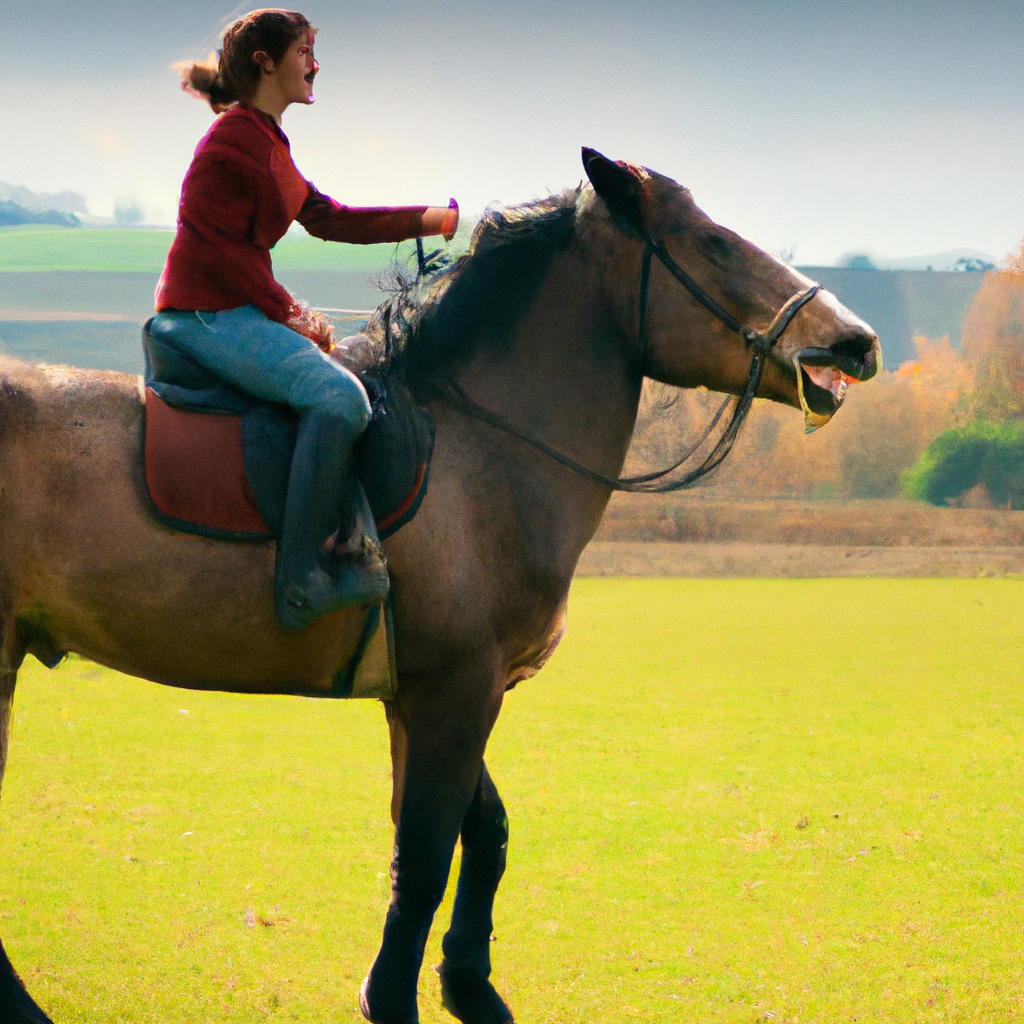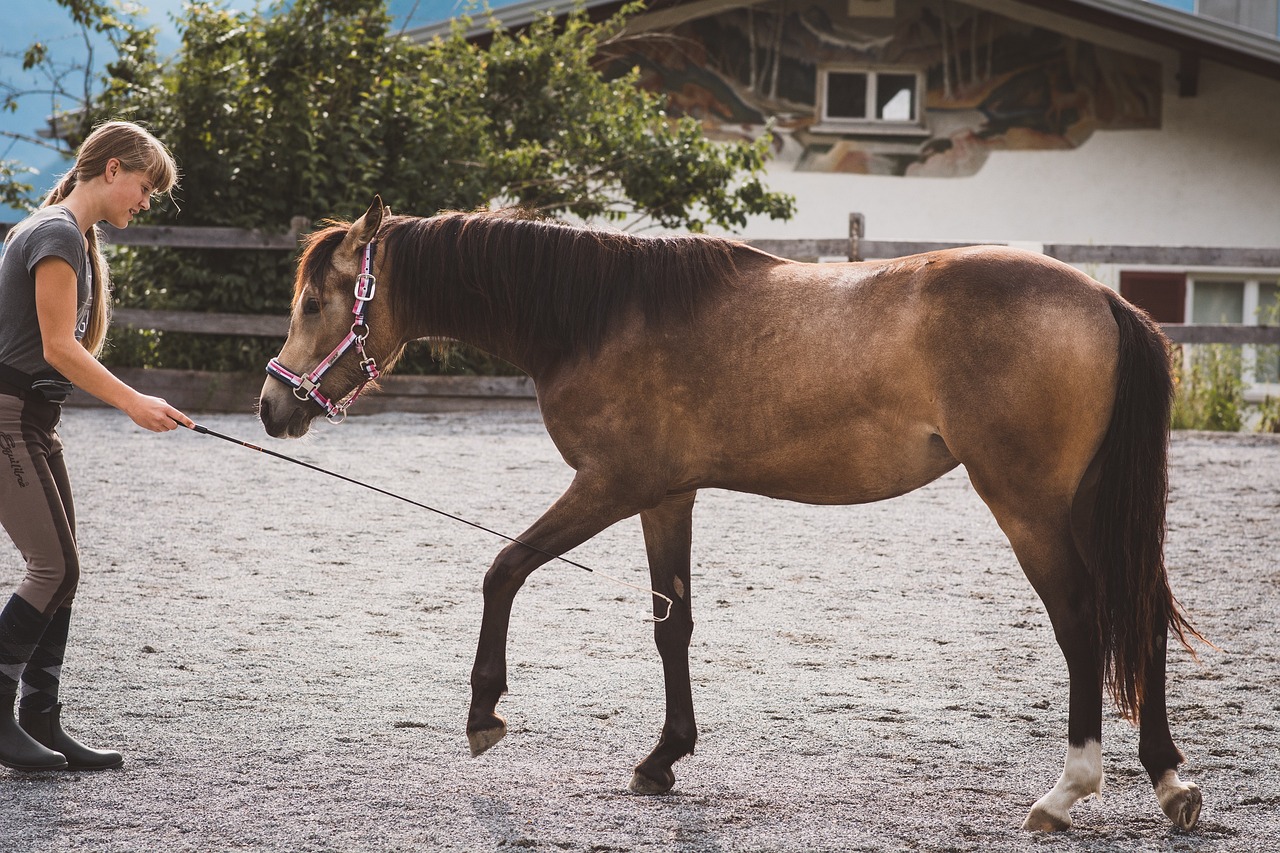You’ve been captivated by their grace and strength, the stunning creatures known as horses. Perhaps, you feel an unspoken connection, a bond that pulls you towards understanding and leading these noble animals. “Mastering the Art of Leading a Horse” is an article that serves as your guide. It doesn’t just teach you the mechanics, it empowers you to build an understanding and meaningful relationship with your equine companion. It presents a step by step manual that aims to develop your confidence as a horse leader, emphasizing the importance of gaining trust and practicing patience. It’s not just about pulling the reins; it’s about navigating a path together. Be ready to embark on a journey that transcends a mere hobby, towards a deep, fulfilling experience of growth and empathy.
Understanding the Basics of Horse Psychology
Knowledge of horse psychology is essential for anyone desiring to lead a horse. Getting to know the behaviors and characteristics of these magnificent animals can go a long way in fostering a healthy relationship between horse and handler.
Recognizing prey animal behaviors
In the wild, horses are prey animals. This means that they are always alert and instinctively ready to run from potential threats. You might notice that your horse startles easily or is always vigilant of its surroundings. This is a normal and instinctual behavior. Your role as a leader is to make the horse feel safe and secure, thus alleviating these innate fears.
Building trust with a horse
Trust is the cornerstone of every successful horse-handler relationship. Building trust takes time, consistency, and understanding. You want your horse to see you as a reliable and kind leader, not a threat. This is achieved by regular and calm interactions, predictable routines, and frequent, gentle handling.
Identifying individual horse personalities
Just like humans, every horse has its own unique personality. Some horses are shy, while others are more outgoing. It’s vital to understand your horse’s specific traits and quirks to tailor your approach and ensure successful leading.
Different Types of Horse Leading Equipment
Proper equipment is crucial for correct and safe leading. Below, we delve into a few of the different types of leading equipment you should know.
Review of horse halters
A horse halter is a key piece of equipment that allows you to guide your horse during leading. It wraps around the horse’s head, providing you with control. There are many different kinds of halters, including nylon and leather halters, training halters, and rope halters. The type you choose should be suitable for your horse’s size, breed, and tolerances.
Types of lead ropes
Lead ropes come in different materials and lengths, from cotton ropes to poly ropes, each offering various degrees of durability and control. Remember, this is not an area to cheap out. A good rope should feel comfortable in your hand, provide good grip and control, and stand up to constant use.
Importance of comfortable and fitting Equipment
Well-fitted and comfortable equipment is not only essential for your horse’s welfare but also makes leading easier. Anything too tight, stiff, or uncomfortable can cause distress, discomfort, and possible injury to your horse, affecting their willingness to follow your lead.
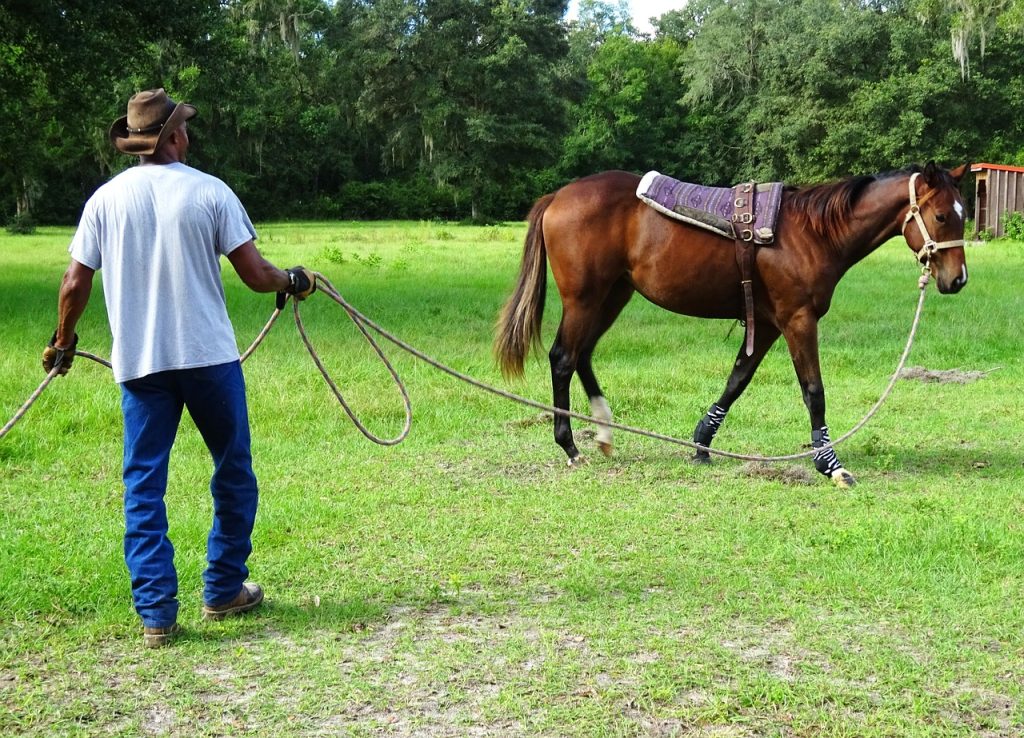
The Techniques for Leading a Horse
Understanding the correct techniques to lead a horse is crucial for safety and effectiveness. Here are some of the techniques you should know.
Leading from the left
This is a traditional method often used when leading horses. It allows the handler to have full visual of the horse and react quickly if something happens. However, there are variations, and it’s also beneficial for the horse to be comfortable being led from both sides.
Importance of a consistent pace
A consistent pace is important for leading a horse. You want to avoid rushing or lagging behind. The horse should match your pace, ideally walking calmly at your side.
Managing sudden stops and overtaking
Sudden stops and overtaking can be quite dangerous during leading. It’s vital to manage these situations correctly by using clear and calm commands, maintaining control, and anticipating your horse’s reactions.
Communication with the Horse while leading
Effective and clear communication forms a core part of leading a horse.
Utilizing body language effectively
Horses communicate primarily through body language. Therefore, having an understanding of it and how to use it effectively is crucial. Remember, horses are experts at interpreting movements and postures.
Voice commands and prompts
Voice commands are another effective means of communication with horses. When consistently used, your horse will begin to associate the commands with actions. Ensure your voice commands are clear, concise, and consistently associated with the same action.
Reacting appropriately to horse signals
Lastly, it’s just as important to understand and react appropriately to your horse’s signals. Are they showing signs of fear, discomfort, or joy? Your ability to interpret these signals will determine how effective your communication and leading will be.
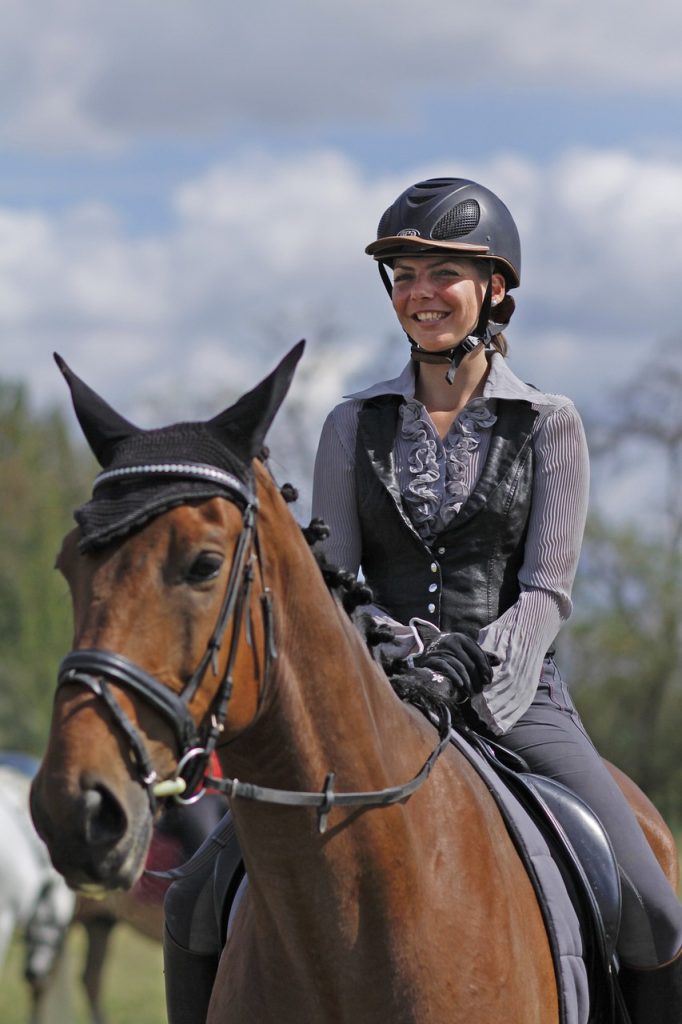
Resolving Common Horse Leading problems
There will be challenges along the way – horses can be reluctant to move, aggressive, or fearful. But don’t let this deter you.
Dealing with reluctance to move
Reluctance to move is common, especially in younger or inexperienced horses. Patience and gentle encouragement are key. Never resort to harsh methods as they may cause unnecessary fear or stress.
Addressing aggressive behaviors
Aggressive behaviors, like biting and kicking, need to be addressed with a firm, consistent approach. This does not mean being aggressive back, but rather asserting your leadership and establishing boundaries.
Handling fearful reactions
Fearful reactions, such as spooking, can pose a challenge during leading. The aim here is to build confidence and trust by exposing the horse to various scenarios gradually and positively.
Training a Horse to Be a good Leader
As with anything, practice makes perfect.
Leveraging on positive reinforcement
Positive reinforcement, like adding a reward when the horse does something correctly, is an effective training method that encourages repeated behavior.
Use of patient and consistent approach
Patience is the key when training a horse. Things won’t always go as planned, but keeping your cool and maintaining a consistent approach will yield results over time.
Creating a horse leading routine
Having a routine gives your horse an understanding of what is expected, which in turn builds trust and confidence.
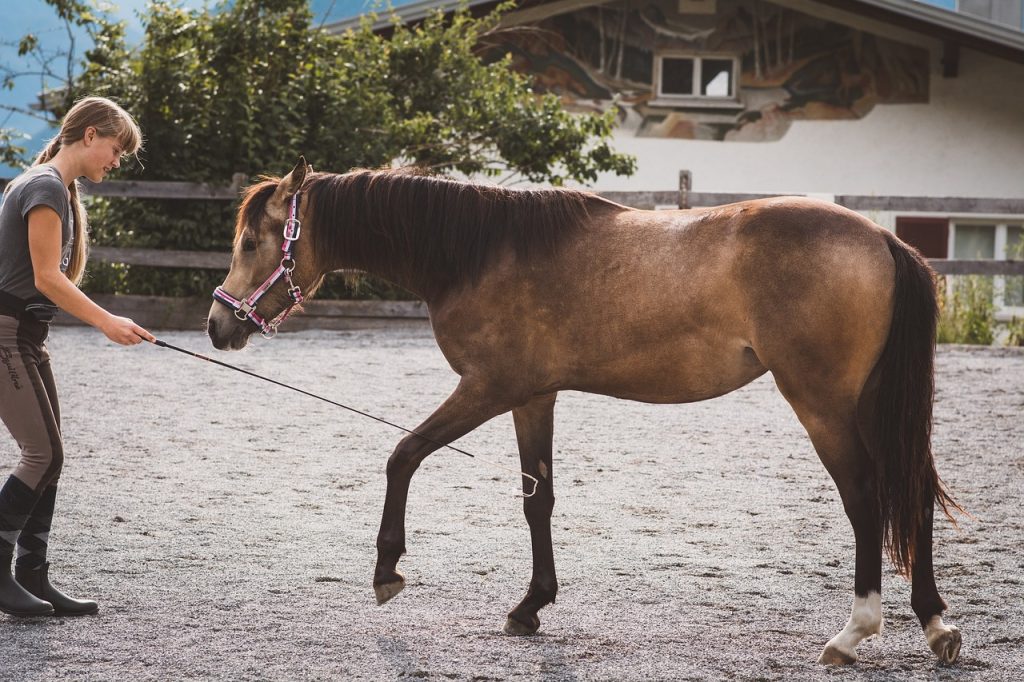
Safety precautions when Leading a Horse
Safety should always be paramount when dealing with horses.
Personal protective gear
Protective clothing, such as sturdy boots and a helmet, can prevent injuries in case of an accident.
Proper handling of the lead rope
A lead rope should always be held correctly, ensuring it’s not wrapped around your hand or your body.
Avoiding a horse’s Kick zone
Always be aware of the horse’s kick zone – the area behind the horse – to avoid potential dangerous kicks.
Leading a Horse in Different Scenarios
Leading a horse in different scenarios can be challenging but necessary for a well-rounded horse.
Leading in Crowded areas
Leading a horse in crowded areas requires confidence, control, and vigilance to ensure the horse remains calm and safe.
Leading during veterinary visits
Veterinary visits can be stressful for horses. Handling them with care, patience, and reassurance can make the experience less traumatizing.
Moving the horse to a new environment
Cribe strategieon a robust routine to help the horse adapt and feel safe.
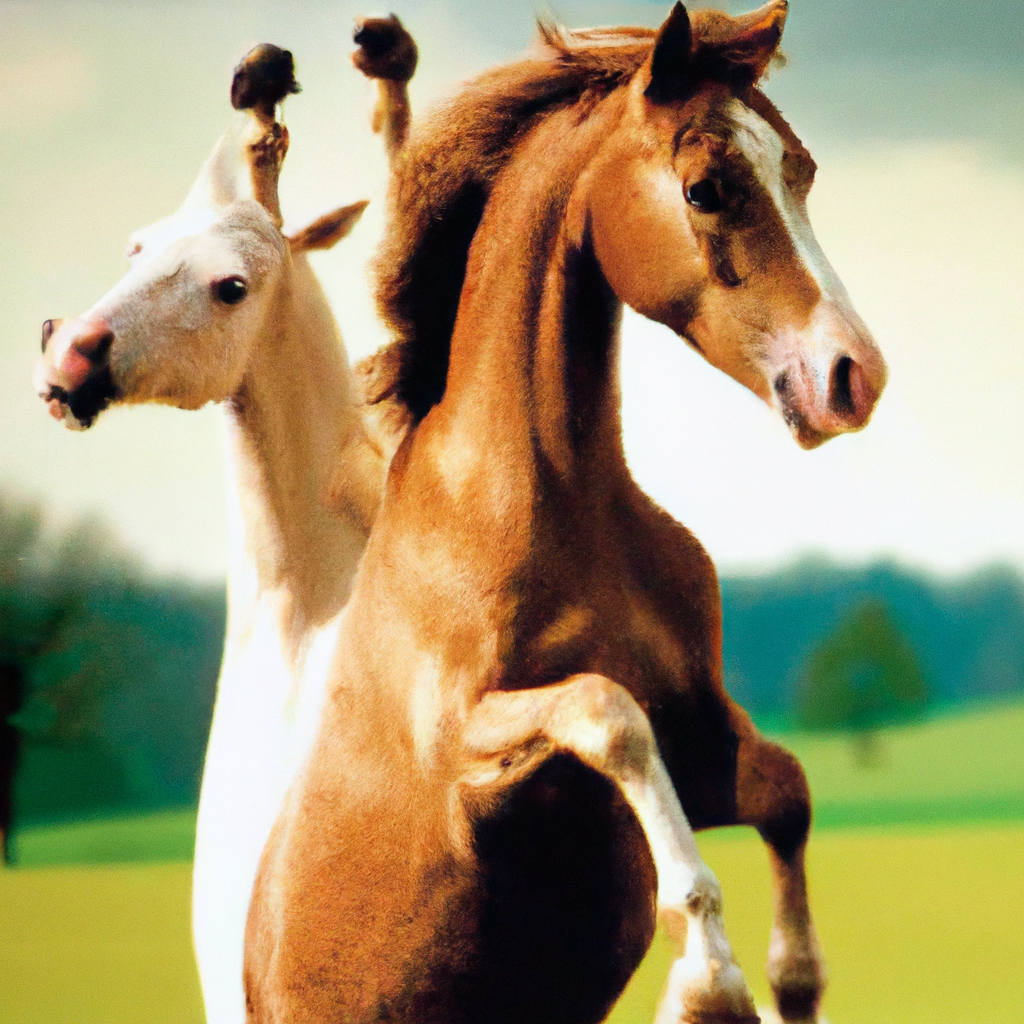
Building a Strong Relationship with your Horse
Building a strong relationship with your horse is a rewarding and fulfilling process.
Segments of bonding time
Take time out regularly for bonding sessions with your horse. This can be during grooming, feeding or simply spending quiet time together.
Understanding horse language
Dedicate time to understanding horse language. Being able to communicate effectively with your horse deepens the bond and mutual respect between you.
Benefits of a strong horse-human relationship
Having a strong horse-human relationship not only makes handling and training easier but it’s also good for your horse’s overall well-being and your personal satisfaction.
The Role of Leading in a Horse’s overall Training
Leading plays a significant role in a horse’s overall training program.
Importance in teaching discipline
Leading is a very basic form of discipline for horses and forms the base for other more advanced forms of training.
Leading as a foundation for further training
The skills learned in leading, like following commands and getting used to handling, are transferrable to other training areas e.g., riding and jumping.
Incorporating leading exercises in a horse’s daily routine
By incorporating leading exercises into a horse’s daily routine, you are not only reinforcing the training but also encouraging a strong and trusting relationship between horse and handler.
There you have it, a comprehensive guide to leading a horse. The key takeaways here are patience, consistency, and trust. Leading a horse is an ongoing process and a journey that has its challenges, but it is also filled with significant rewards. So take your time, enjoy the journey, and develop that special bond with your horse.
